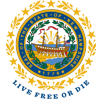Joint Information Center
The Joint Information Center is a central or remote location that facilitates the operation of the Joint Information System, which organizes, integrates and coordinates information to provide messaging cross multiple jurisdictions.
The Joint Information System provides the mechanism to organize, integrate and coordinate information to ensure timely, accurate, accessible and consistent messaging across multiple jurisdictions and/or disciplines.
The Joint Information Center is the central location that facilitates the operation of the JIS. It is a physical or an Internet-based virtual location where personnel with public information responsibilities perform media and community relations during an incident or event. The Joint Information Center structure is designed to work equally well for large or small incidents and can expand or contract to meet the needs of the incident.
Efficient information flow is critical to effectively meet public information needs and carry out Public Information Office responsibilities when multiple organizations come together to respond to an emergency or manage an event.
By maintaining a centralized communication facility, resources can be better managed and duplication of effort is minimized. The use of a Joint Information Center allows for tracking and maintaining records and information.
Responsibilities
- Be the first and best source of information.
- Develop, recommend and execute public information plans and strategies on behalf of the Incident Commander/Unified Command.
- Advise the Incident Commander/Unified Command concerning public affairs issues that could impact the response.
- Ensure the various response agencies' information personnel work together to minimize conflict.
- Gain and maintain public trust and confidence.
- Gather information about the crisis.
- Capture video and photos of the crisis for release to the media and to support the response.
- Write and communicate emergency public information regarding public protective actions, evacuations, sheltering and other public safety messages.
- Ensure the timely and coordinated release of accurate information to the public by providing a single release point of information.
- Facilitate and manage control of rumors.
- Monitor and measure public perception of the incident.
- Inform the Incident Commander/Unified Command of public reaction, attitude and needs.
When It Should Be Established
The Joint Information Center structure is most useful when multiple organizations must coordinate timely, accurate information to the public and other stakeholders. Emergency situations could include natural disasters, oil spills and other hazardous substance releases or terrorist incidents. The structure may also be useful in coordinating multi-agency event planning for major meetings and events, such as the Olympics or Super Bowl.
The following are incident types in which multiple agencies are involved and for which the Incident Commander/Unified Command would usually decide to establish a Joint Information Center.
Type 4
- Command staff and general staff functions are activated only if needed.
- Several resources are required to mitigate the incident.
- The incident is usually limited to one operational period in the control phase.
- No written Incident Action Plan is required, but a documented operational briefing will be completed for all incoming resources.
- Examples include house fires, minor oil spills and minor chemical releases.
Type 3
- When capabilities exceed initial needs, the appropriate Incident Command System positions should be added to match the complexity of the incident.
- Some or all of the Command and General Staff positions may be activated, as well as Division/Group Supervisor and/or Unit Leader level positions.
- The incident may extend into multiple operational periods.
- A written Incident Action Plan may be required for each operational period.
- Examples include the New Hampshire Ball Bearings plant explosion and fire, Peterborough; medium oil spill or chemical release and local flooding.
Type 2
- This type of incident extends beyond the capabilities of local control and is expected to go into multiple operational periods. A Type 2 incident may require the response of resources out of the area, including regional and/or national resources, to effectively manage the operations, command and general staffing.
- Most or all of the Command and General Staff positions are filled.
- A written Incident Action Plan is required for each operational period.
- Many of the functional units are needed and staffed.
- Examples include National Special Security Events, such as pre-deployments for the Olympics or Super Bowl, national political conventions, major flooding and major wildfires.
Type 1
- This type of incident is the most complex, requiring national resources to safely and effectively manage and operate.
- All Command and General Staff positions are activated.
- Branches need to be established.
- Use of resource advisors at the incident base is recommended.
- There is a high impact on the local jurisdiction requiring additional staff for office administrative and support functions.
- Examples include the Deepwater Horizon Event, the terrorist attacks of September 11, 2001, Hurricane Katrina, and the COVID-19 pandemic.



